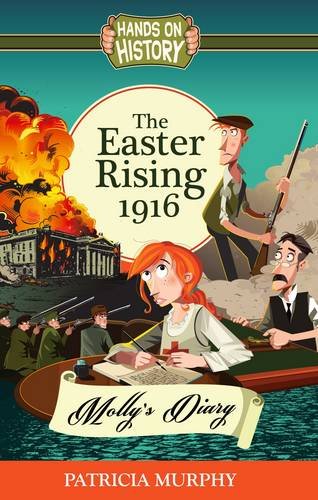The Easter Rising: Molly’s Diary
Patricia Murphy, the prize-winning producer and director of BBC and Channel 4 documentaries, has here produced a lively historical novel based on solid fact. Molly and Jack O’Donovan are caught up in the Easter Rising in Dublin in 1916: fourteen-year-old Jack carrying messages for the rebels, and twelve-year-old Molly aiding the wounded. When Jack is missing and feared dead, it is up to Molly to try and find him, then help him escape.
The novel is written in the form of Molly’s diary, and effectively delineates one child’s rapid ascent to maturity. The girl who starts the story complaining that her brother ‘teases me something rotten’ and describing her new diary as ‘the best present ever’ finds herself a hundred pages later ministering to wounded soldiers – ‘His foot looked like something caught in a mangle’ – and ends the book understanding that ‘the blood spilt on both sides is all the same colour red.’
An exciting and fast-paced narrative told from Molly’s point of view is pinned down at every point by meticulous research: we learn, for example, that the women whose husbands are away fighting in France are called ‘Separation women’, that the local Scout troop is a front for Fenian recruits, and that putting sugar on a wound can help fight infection. We meet the real actors in the rebellion, men such as James Connolly and Michael Collins, and experience their fears, triumphs and dilemmas. The language throughout is simple, almost tele-visual: ‘A cylindrical iron lorry used to transport stout had holes drilled in the side to create an armoured vehicle.’
Children of 10 -14 would love this, and it gives an invaluable insight into what it is like to be caught up in violent political upheaval – as relevant today as ever.










